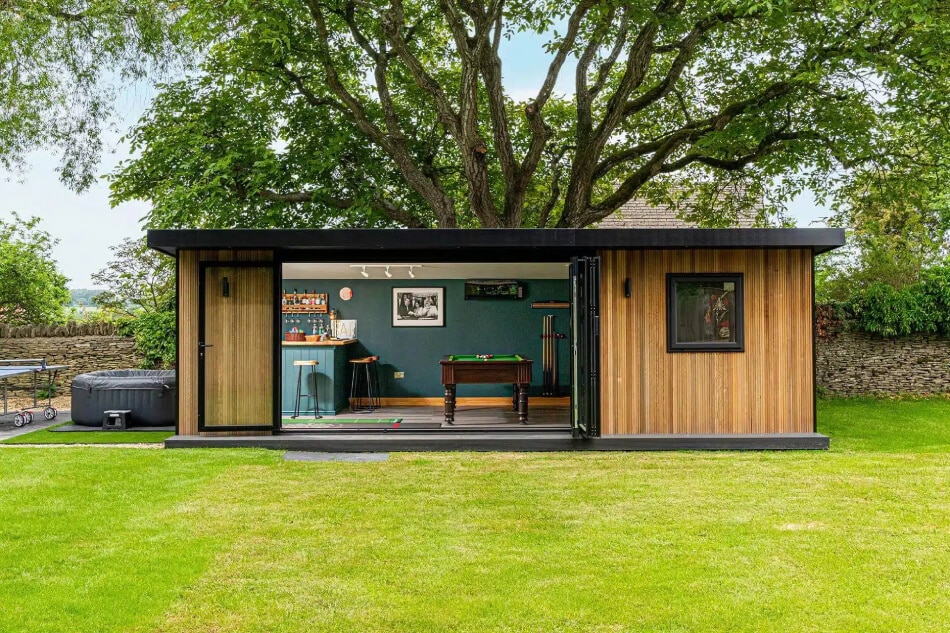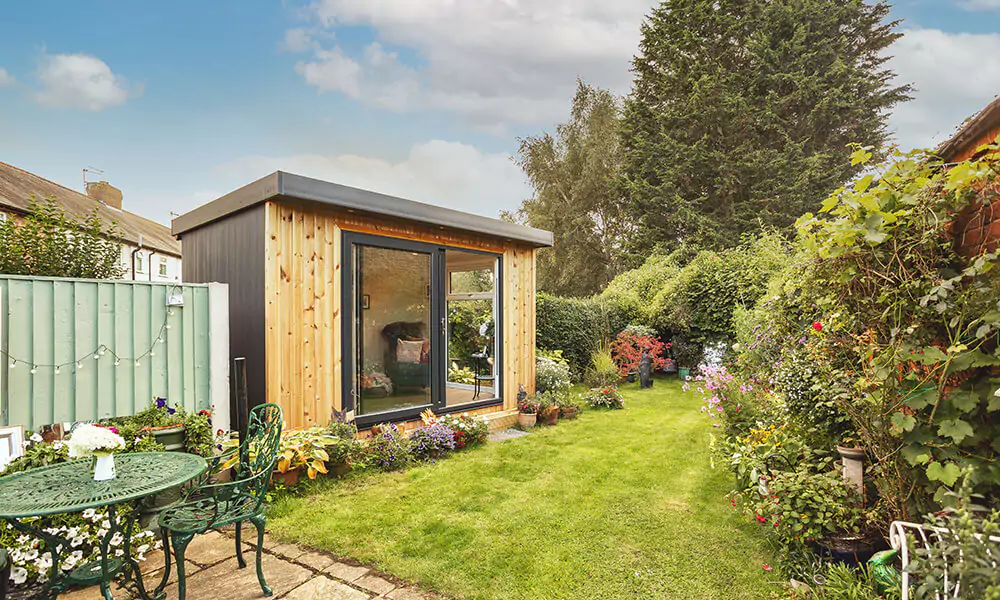New Suggestions For Planning Permission For Garden Buildings
New Suggestions For Planning Permission For Garden Buildings
Blog Article
What Planning Permission Is Required For Garden Rooms, For Example, With Respect To Conservation Areas?
To preserve the aesthetics and character of conservation areas, when construction of extensions, gardens or conservatories within these areas, there are certain restrictions that must be adhered to. Here are the key factors to consider when planning permission is granted in conservation areas: General Restrictions:
Any building or extension that falls under permitted development rights may still require planning permission within a conservation area. This includes sheds, garden rooms and other outbuildings.
Size and Scale
If they affect the style or appearance of the region the structure of any size might require approval for planning. In designated zones, there are more strict limitations on the size and shape of any new structure or extensions.
The property's location
The likelihood of a property that requires planning permission rises if the building or extension is situated to the side, front or rear. The rear of structures may be required if they are is visible from public spaces or if it affects the overall character.
Materials and Design
Design and materials are important when it comes to conservation zones. Materials that are used in any new construction or extension should be compatible with the historic or architectural importance of the surrounding area. In order to meet these criteria, you will need planning permission.
Demolition:
In conservation areas, demolition of existing structures and portions of buildings (including outbuildings and boundary walls.) generally requires approval from the planning department to ensure that the proposed changes are in line with the characteristics of the land.
Height Restrictions:
There are stricter height restrictions in conservation areas. If a structure exceeds 2.5 meters in height, it is likely that planning permission is required.
Effects on the surroundings
Planning permission is needed if the building or extension proposed will impact the visual appearance or setting of the Conservation Area in addition to the views that enter and leave the area.
The Building is used for:
It is possible that a garden building or room may be within the permitted size limit, but the intended purpose for example, a home studio, office or other habitable space, might require planning permission.
Changes and additions
Planning permission is usually required for extensions that exceed the size or volume limit or alter the exterior appearance. This applies to conservatories as well as other significant alterations.
Curtilage Structures:
The curtilage of a listed building within conservation districts always require planning permission. This applies to any expansions or changes or additions to outbuildings.
Trees that are protected:
Trees are protected in conservation areas. If you intend to build on trees, additional permits, like tree works consent and planning permissions, might be needed.
Local Authority Guidelines
Local planning authorities can establish specific guidelines and restrictions for each conservation area. They may also have detailed guidelines about what's permissible and not, adapted to the particular characteristics of the region.
In essence, obtaining permission to plan in a conservation area involves an extensive evaluation of how a proposed garden room or conservatory, an outhouse, garden office or extension will impact the area's historic and architectural nature. It is essential to speak with the local authority before you begin when making plans for your project. This will ensure it is in line with the applicable guidelines and regulations. View the best do i need planning permission for a garden room uk for website advice including garden rooms in St Albans, outhouse buildings, garden outhouse, my outhouse, ground screws vs concrete, garden out house, herts garden rooms, costco garden office, best electric heater for cabin, garden room conservatory and more.
What Type Of Permits Do You Need To Build Gardens And Other Structures?
Planning permission can be affected by the environmental impacts of garden rooms, conservatories and outhouses. Here are key environmental considerations Biodiversity:
If the proposed structure impacts local wildlife habitats like hedgerows, trees or ponds then permits for planning are required. To minimize and evaluate the impact an eco-survey might be required.
Habitats And Species That Are Protected
Planning permission is required if the site contains endangered species (e.g. bats and newts), or is located close to habitats that are of scientific interest (e.g. Sites of Special Scientific Interest: SSSI). It is essential to take special measures to protect these species.
Tree Preservation Orders
A permit for planning is needed for every construction that requires the removal or alteration of trees that are protected by TPOs. The local authority will evaluate the impacts and could require replacement plants or other mitigation measures.
Flood Risk and Water Management
Permission to develop in flood prone areas or near bodies of water is required. A flood risk assessment (FRA) could be required to ensure that the building does not increase flood risk and has adequate drainage solutions.
Sustainable Construction Practices
It is possible to obtain planning approval in order to use sustainable construction materials and practices. Consideration should be given to energy efficiency as well as insulation and carbon footprint.
Drainage and Surface Water Runoff:
Environmental considerations include the impact of a new structure on surface water runoff as well as drainage. Planning permission is required to ensure proper drainage systems to avoid flooding and waterlogging.
Soil Stability and Soil:
Planning permission is required if the construction could affect soil's stability or quality. This includes issues like subsidence and soil erosion on sloped areas.
Air Quality
For any development that might have an impact on the local air quality (such as near industrial zones or major roads) Planning permission is required. The air pollution level must be within acceptable limits and mitigation measures should be implemented.
Noise Pollution:
Planning permission might be required when a proposed garden room usage could cause a significant amount of noise. The local council will assess the level of noise and its potential impact on neighbors and environmental impact.
Waste Management:
The proper disposal of waste throughout construction and afterwards is vital. Planning permission is required to ensure that adequate provisions are made for waste disposal and recycle to minimize environmental impact.
Energy Efficiency
Planning permission can be accompanied by the need for energy efficient technology including solar panels, for example. high-performance glass. This reduces the environmental footprint of the new structure.
Environmental Regulations
Environmental regulations like the UK Environmental Protection Act must be adhered to by all developments. Planning permission ensures that all legal obligations are met and that the development is sustainable for the environment.
The permission to plan granted for garden rooms, conservatories and outhouses should also be based on a wide range of impacts on the natural environment. It is essential to speak with local authorities before beginning the process of planning to be able to understand the specific requirements. This will also ensure the development is environmentally friendly and complies with all relevant regulations. Have a look at the top conservatory what is it for site tips including garden room heater, Tring garden rooms, what size garden room without planning permission, how to get power to a garden room, Tring garden rooms, garden rooms, outhouse uk, Tring garden rooms, what size garden room without planning permission, garden rooms near me and more.
In Terms Of Design And Appearance, What Kind Of Planning Permits Do You Require For Garden Rooms?
In deciding whether or not to get planning permission for gardens rooms, conservatories and outhouses and also extensions or gardens it is essential to take into consideration the design of the building. The most important factors to consider:
Planning permission is not necessary if the proposed structure falls under the permissible development rights of your property. But, there are certain aesthetic and design requirements that must be met.
Size and Scale
The dimensions and size of the new building must be proportional to the structure that is in place and the adjacent buildings. The dimensions of the structure that is built must be proportionate to the property's size and surroundings buildings.
Height and Massing
The massing and height of the building must be proportional to the size of the existing structure and buildings around it. Planning permits are often required for structures that are over the height limits or are incompatible with the area.
Materials and Finishes
The selection of materials and finishing should match the current property and adjacent structures. It is possible to seek planning permission if the materials chosen aren't in keeping with the character and design of the space.
Design Harmony
The new design should be in sync with the existing buildings and the surrounding property. Planning permission is required if the proposed design isn't in accordance with the local character and appearance.
Roof Design
The design of the roof must be in harmony with the architectural style of the existing building and the surrounding structures. Planning permits may be required for a roof design that does not match the local style or appearance.
Fenestration Windows and Doors:
The design and layout of windows and doors must be harmonious with the surroundings. The proposed fenestration might require a permit for planning when it doesn't match the local architectural style.
Facade Treatment
The facade treatment must blend in with the surrounding property and existing structures. Planning permission may be required in the event that the proposed facade design isn't in accordance with the local culture and style.
Landscaping and Surroundings:
The landscaping around the new structure must be in harmony with the existing landscaping and structures. If the landscaping doesn't conform to the local style and character, planning permission may be needed.
Visual Impact
The visual impact of the new structure's visual impact on the surrounding landscape is expected to be minimal. A permit for planning may be required for a structure that has a negative effect on the area.
Heritage and Conservation Areas
If the property is in the conservation or heritage zone, there may be stricter standards for design and appearance. If a building that is being constructed is not in compliance with these requirements, planning permission might be required.
Architectural and planning guidelines:
Local planning authorities frequently established specific guidelines for style and appearance that have to be adhered to. Planning permission may be required in the event that a proposed building is not in line with these guidelines.
Planning permission is often dependent on the appearance and design of the building. This is the case for conservatories, garden rooms or outhouses. It is crucial to check with your local authority for planning at an early stage of the process of planning to make sure that you are following local guidelines for aesthetics and character, and also to determine whether planning consent is required. Have a look at the top rated underground garden room for website info including garden room permitted development, best electric heater for cabin, myouthouse, garden rooms near me, garden out house, garden rooms hertfordshire, outhouse building, what size garden room without planning permission, insulated garden rooms, ground screws vs concrete and more.